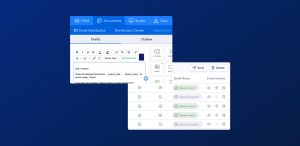If you’re reading this blog it’s highly likely that you have some form of interest in how your organization manages what we at Kurtosys often refer to as the “Document Explosion” problem.
We are delighted to have piqued your interest — it’s been tough to find you. But be comforted. There is not a single asset management firm, large or small, across the globe that isn’t having to deal with this problem.
The first issue is what documents you need to manage. Here is a short list of the minimum:
- Fund fact sheets
- Quarterly commentaries
- KiiDs
- Annual accounts
- Quarterly accounts
- Subscription forms
- Transaction forms
- Sales aids
- Sales presentations
- Attribution analysis
- Reasons to buy
- Suitability
- Fund research
The list can become extensive. The “explosion” element comes when you have to manage versions, different investor types and your range of distribution channels and languages. To top it all, there is also a need to store these documents going back in time. While the regulation over document retention is somewhat murky, it’s in your interest to store these documents for at least 7 years.
Your problem is further compounded by trying to record who has actually seen (or was in a position to see) these documents at any point in time. Providing evidence gives you and your organization the credibility and confidence that the things you do today are future-proofed from customer queries or regulatory scrutiny further down the line.
What’s the solution?
It’s actually quite simple but the desire to overcomplicate can sometimes provide unnecessary layers to the problem that only make things more expensive and complex to handle with each passing month.
Two technologically-driven paradigms need to be introduced into your organization:
- A Content Center:
The days of having a centralized Content Repository are over. Your document content is federated all over your organization and amongst your suppliers such as your fund administrator. What you need to put in place is a Master Content Centre that can load and store documents, but also reference those stored in other repositories or content services. You need to rid yourself of the burden of having to store every single piece of content in a centralized place. This is an old-fashioned way of thinking. Sure, you will have areas of concentrated storage but you will always have content that is “somewhere else.” Your evolving business model will see to that. The essential ingredient to making this type of federated content architecture practical is that every content source must “tag” the content with appropriate description data (meta-data) This will later help us ensure this content is provided to the right consumer. In the simplest cases this is basic data such as Investor Type, Document Type, Language and Country of Registration. Ultimately these could contain more descriptive data points (keywords, subject types, etc.). - An Entitlement Center:
This is where 90% of asset managers let themselves down. Entitlement implies some form of security and user permission. Why would we want to do that for public mutual funds? Said like this, I hope the answer to the question becomes clearer. The reason “why” is that certain documents are only relevant for certain markets (e.g. KiiDs are for different countries in specific languages). Certain documents are relevant to only certain organizations (attribution may only be given to specific advisors or wholesalers). Further, certain documents are only available to certain types of distributors. Areas in your website may only host specific types of documents. Typically this whole field,which we call “entitlement,” is managed through spreadsheets and manual processes. My argument is that this is the true KEY to your strategic solution. If you had a system or process for allowing your marketing/product/compliance axis to manage the entitlement of all your documents that are sitting on Content Center then you will have established a fluid and efficient way of managing all of your documents across your entire organization in a way previously unimaginable.
So, what am I saying?
1) Get your documents referenced and/or stored with the right descriptive data.
2) Find a document management solution that entitles various usages of docs in a flexible way where you facilitate your marketing, product and compliance groups to work in concert and govern what types of consuming agent can see what documents.
The real “Aha” moment will come when you see how this simple strategic architecture lets your sales channels search and discover your content with consummate ease.
Come talk to us @Kurtosys and learn about our DocPortal solutions.



